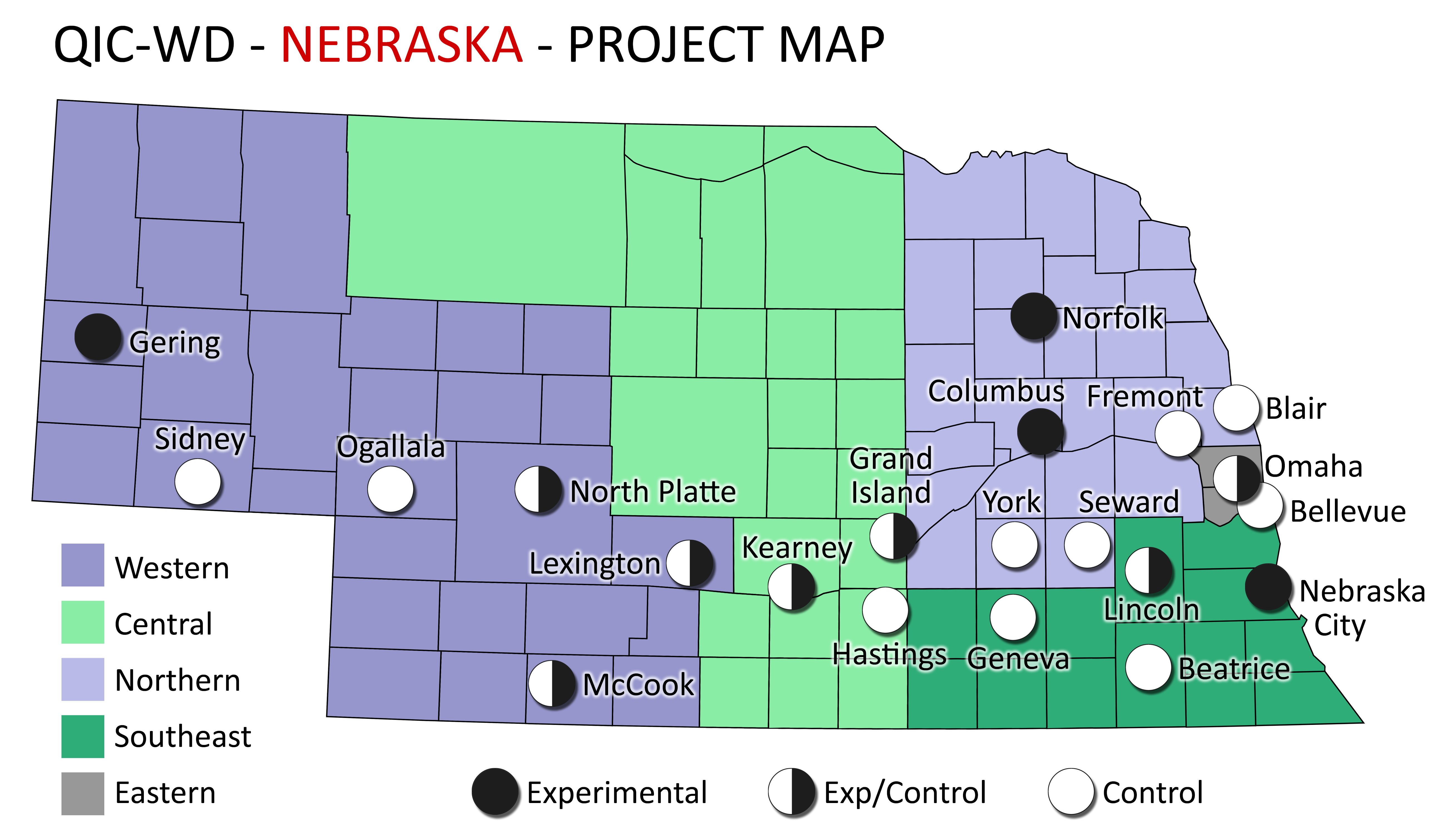Addressing Work-related Traumatic Stress
The Nebraska Department of Health and Human Services (DHHS) is a multi-service agency led by a Chief Executive Officer (CEO), who is appointed by the Governor. The CEO oversees six divisions including the Division of Children and Family Services (DCFS), which is the state’s child welfare agency. The divisions are supported by centralized operations that include Human Resources (HR) & Development. HR has at least one individual with a strong working knowledge of DCFS operations and who is specifically assigned to provide support solely to DCFS.
DCFS is a state-administered system organized into five geographic regions: Western Service Area (WSA), Central Service Area (CSA), Northern Service Area (NSA); Southeast Service Area (SESA); and the Eastern Service Area (ESA). Each service area conducts initial assessments/investigations and on-going case management except for ESA, where on-going case management and service coordination is privatized.
DCFS has a director and a deputy director who oversee a Service Area Administrator (SAA) in each region. The five SAAs are responsible for the delivery and supervision of child welfare case management within their respective geographic areas. In 2017, DCFS employed approximately 400 Child and Family Services Specialists (CFSS) or case managers, 70 CFS Specialist Supervisors, and 15 CFS Field Administrators.

QIC-WD Project Overview
The QIC-WD’s Site Implementation Manager (SIM) worked in the central office to support implementation of a statewide intervention, CFS Strong: Building a Resilient Workforce. CFS Strong was designed to increase levels of optimism, resiliency, and job satisfaction among CFSS and decrease levels of secondary traumatic stress symptoms and burnout. Fourteen pairs of supervisory teams were randomly assigned to participate in CFS Strong in either an intervention or a control group.
Turnover
Generally, the annualized turnover rate in 2017 among the Nebraska DCFS child welfare workers and supervisors was about 30%. For example, in November 2017 there was a cohort of 388 active caseworkers and trainees and 120 were no longer in that role one year later.
